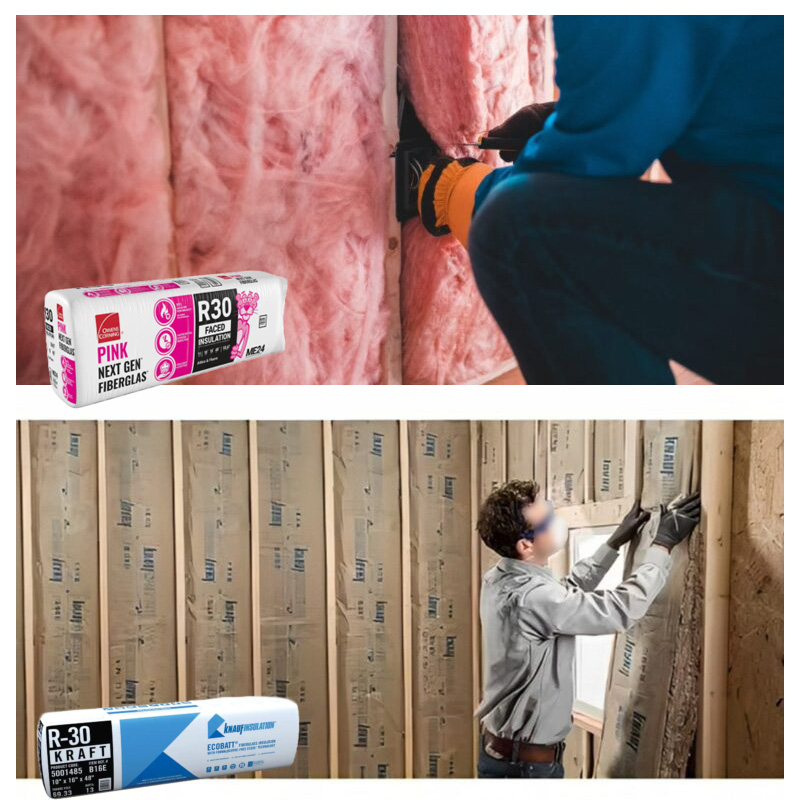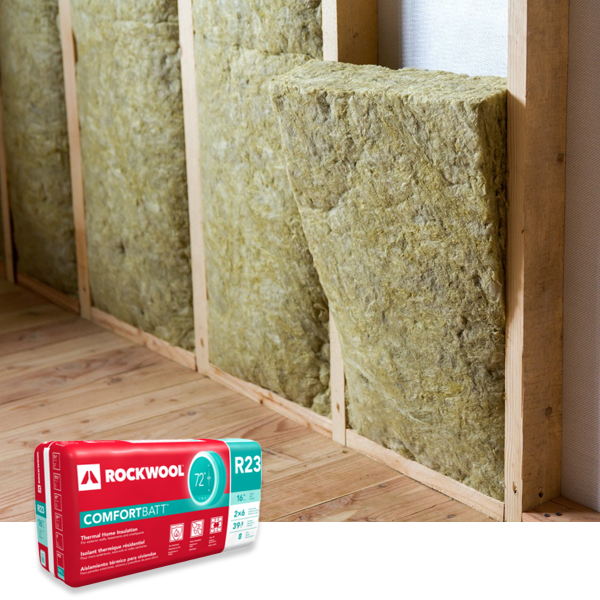Batt Insulation
What is Batt Insulation?
Batt insulation, also known as blanket insulation, is made of fiberglass fibers that are bound together with a binder. It is available in pre-cut widths and lengths, making it easy to install in standard spaces between wall studs, floor joists, and ceiling rafters. It is an affordable option for those looking to insulate their homes.
Thank you for reading this post, don't forget to subscribe!Batt insulation, on the other hand, is available in loose-fill. This type of insulation is made of fine fibers that are blown into walls, attics, and other areas. It is an ideal choice for retrofit projects, as it can be installed in hard-to-reach places. Fiberglass insulation also has a higher R-value per inch compared to batt insulation, making it a better choice for areas with extreme temperatures.
In conclusion, both batt and fiberglass insulation are great options for insulating homes and buildings. The choice between the two will depend on personal preference, budget, and the specific insulation needs of the structure.
Overall, blow-in insulation is a cost-effective and efficient way to improve the energy efficiency of your home. It can reduce your energy bills, increase your comfort, and provide long-lasting protection against heat loss. If you’re considering adding insulation to your home, blow-in insulation is definitely worth considering.
Upgrade Your Home with Batt Insulation
BATT Insulation “FiberGlass”
Batt insulation is a common and effective way to insulate homes and buildings, and fiberglass is a popular material for this type of insulation. Fiberglass batts are made from tiny glass fibers that are spun into a wool-like material and formed into long, rectangular sheets.
One of the primary benefits of fiberglass batt insulation is its ease of installation. Batts are pre-cut to fit between standard stud and joist spacing, making installation quick and simple. Additionally, fiberglass batts can be easily cut to fit around irregular shapes, which makes them a good choice for insulation projects that require a custom fit.
Another benefit of fiberglass batt insulation is its excellent thermal performance. The tiny fibers in the insulation trap air, which helps to slow the transfer of heat between the interior and exterior of a building. This helps to keep the building warm in the winter and cool in the summer, which can lead to significant energy savings over time.
Fiberglass batt insulation is also a durable option for insulation. Because it is made from glass fibers, it is resistant to damage from pests, fire, and other hazards. Additionally, fiberglass batts are non-combustible and will not contribute to the spread of fire, which can be an important safety consideration.
Overall, fiberglass batt insulation is a versatile and effective option for insulating homes and buildings. Whether you are looking to improve the energy efficiency of your home or protect your building from hazards, fiberglass batt insulation is a smart choice that offers many benefits.

Stay Comfortable with Batt Insulation
Save money. Improve comfort.
Enjoy Peace and Quiet with Batt Insulation
Reduce noise. Enjoy tranquility.
Prevent Moisture and Mold with Batt Insulation
Barrier protection. Prevent mold.
Understanding the Basics: Faced and Unfaced Fiberglass Insulation
Selecting the right type of fiberglass insulation and facing material is crucial to achieving optimal thermal and acoustic insulation in your home or building. Faced insulation, which includes a vapor retarder or facing material, is an excellent option for walls, ceilings, and floors, where there is a risk of moisture infiltration. The facing material serves as a barrier, preventing moisture from penetrating the insulation and compromising its performance. On the other hand, unfaced insulation is typically used in attics and crawl spaces, where there is less risk of moisture infiltration.
When selecting the facing material for your insulation, it’s important to consider various factors, including your climate, humidity levels, and ventilation. You should also be aware of any local building codes or regulations that may apply. With the right type of insulation and facing material, you can significantly improve the energy efficiency and comfort of your home or building, while also ensuring optimal protection against moisture and other potential threats.


Batt Insulation “Rockwool”
Batt insulation made from Rockwool is a high-performance option for insulating homes and buildings. Rockwool batts are made from mineral wool, which is a type of insulation material that is made from natural rocks and minerals. The material is spun into fibers and formed into long, rectangular sheets that are designed to fit between standard studs and joist spacing.
One of the primary benefits of Rockwool batt insulation is its excellent thermal performance. The unique composition of the material allows it to trap air, which helps to slow the transfer of heat between the interior and exterior of a building. This helps to keep the building warm in the winter and cool in the summer, which can lead to significant energy savings over time.
Another benefit of Rockwool batt insulation is its ability to resist moisture. The material is naturally resistant to water and will not absorb moisture like other types of insulation. This can help to prevent mold and mildew growth in homes and buildings, which can be a major health concern.
Rockwool batt insulation is also a durable option for insulation. Because it is made from natural rocks and minerals, it is resistant to damage from pests, fire, and other hazards. Additionally, Rockwool batts are non-combustible and will not contribute to the spread of fire, which can be an important safety consideration.
Overall, Rockwool batt insulation is a versatile and effective option for insulating homes and buildings. Whether you are looking to improve the energy efficiency of your home or protect your building from moisture and pests, Rockwool batt insulation is a smart choice that offers many benefits.
Batt Insulation “Soundproofing”
Batt insulation can also be used for soundproofing purposes, in addition to its thermal insulation properties. Soundproofing batt insulation is designed to reduce the transfer of sound between rooms or from outside sources, which can help to create a quieter and more comfortable living or working space.
One of the primary benefits of soundproofing batt insulation is its ability to absorb and reduce sound waves. The insulation is made from materials that are specifically designed to block sound, such as mineral wool, which is denser than other types of insulation. This density allows soundproofing batt insulation to absorb more sound waves and reduce the amount of noise that passes through walls or floors.
Another benefit of soundproofing batt insulation is its ease of installation. Batts are pre-cut to fit between standard stud and joist spacing, making installation quick and simple. Additionally, soundproofing batts can be easily cut to fit around irregular shapes, which makes them a good choice for soundproofing projects that require a custom fit.
Soundproofing batt insulation is also a durable option for insulation. Because it is made from dense materials, it is resistant to damage from pests, fire, and other hazards. Additionally, soundproofing batts can help to improve the overall insulation of a space, which can lead to energy savings and improved indoor comfort.
Overall, soundproofing batt insulation is a versatile and effective option for reducing noise and improving the acoustics of a space. Whether you are looking to create a more peaceful home environment or reduce noise in a commercial space, soundproofing batt insulation is a smart choice that offers many benefits.

